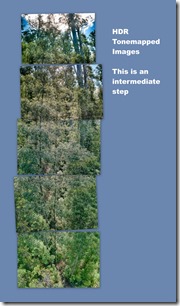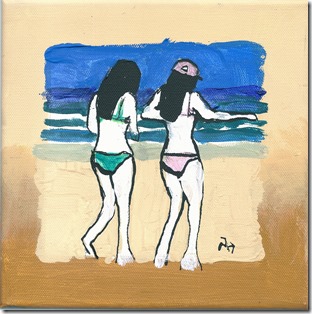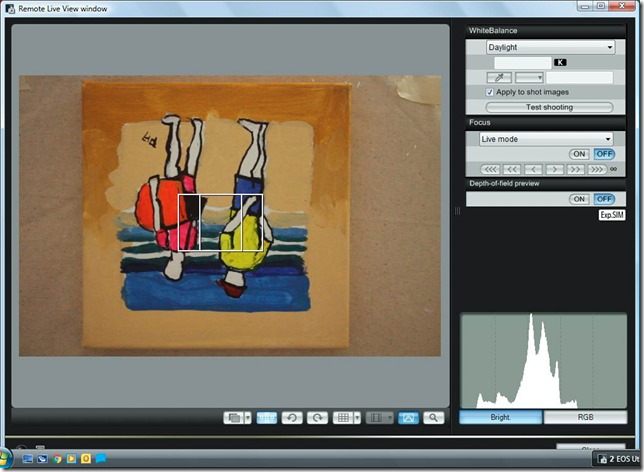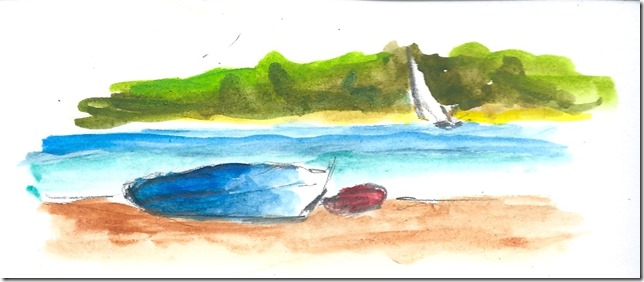As I walked through the forest I just took almost exclusively bracketed sets of images. Not only for a single scene but also for every image in a panoramics series, the number of images quickly multiplies.
I already take Raw & Jpeg, then 3 brackets means 6 images when I press the shutter. Next I might take 5 overlapping photos to cover the full range of the very tall trees. And I’m up to 30 images just to get. A single final photo. I took around 20 such multi-image panoramas and wow over 600 photos on my hard drive. 
Just looking through that number of images becomes a challenge. It makes a couple of minutes (mainly waiting) to create the HDR image (using default preset/setting). Longer if I want to tweak any settings. This steps also creates another larger .Tiff file (I’m creating 16bit tiffs to get maximum dynamic range and colour info). Next the autostitch can be as fast as a few minutes for a small preview but that quickly becomes about 20minutes (again mostly waiting) if I want a large (almost full size, ie as large as assembling to component images). Even though my little HP spectre only has limited disc capacity and slightly lower speed (i5 versus i7 processor) than my desktop. memeory is the same and the HP has an SSD drive which makes everything, even lightroom, look snappier. Suddenly I realise I’m spending half and hour on each separate HDR/panorama. That’s going to be 10 hours if I want to process all images. Worst the photos and sub-stages would take up about 17 gigabytes! This is turning into a nightmare.
This steps also creates another larger .Tiff file (I’m creating 16bit tiffs to get maximum dynamic range and colour info). Next the autostitch can be as fast as a few minutes for a small preview but that quickly becomes about 20minutes (again mostly waiting) if I want a large (almost full size, ie as large as assembling to component images). Even though my little HP spectre only has limited disc capacity and slightly lower speed (i5 versus i7 processor) than my desktop. memeory is the same and the HP has an SSD drive which makes everything, even lightroom, look snappier. Suddenly I realise I’m spending half and hour on each separate HDR/panorama. That’s going to be 10 hours if I want to process all images. Worst the photos and sub-stages would take up about 17 gigabytes! This is turning into a nightmare.
Ok that’s just too much. So I’ve opted to do some preview stitching to a small image size (1400 pixels wide) from the EV=0 exposures to judge the desirability to go to more complete processing. Cutting the task down to just 4 big images at the moment. The first image below I spent over half an hour setting is not one of those I wanted to keep! Such is life.

 While I was in Tassy I found the blue folio containing my art gear was a bit awkward to always carry around. weight wise it was fine it just always required being held in one hand (eg I had o put it down to take a photo etc) and it was a little on the largish side anyway. So I started leaving it behind and only sketching with what was in my camera bag (which was probably fine). But leaving my better art gear unused seemed a waste, and while passing the
While I was in Tassy I found the blue folio containing my art gear was a bit awkward to always carry around. weight wise it was fine it just always required being held in one hand (eg I had o put it down to take a photo etc) and it was a little on the largish side anyway. So I started leaving it behind and only sketching with what was in my camera bag (which was probably fine). But leaving my better art gear unused seemed a waste, and while passing the 














